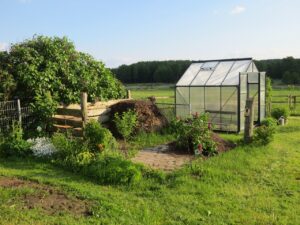Growing Together: The Rise and Benefits of Communal Gardens in UK Housing Developments

As the UK embarks on one of its most ambitious housing expansion plans—1.5 million new homes over the next five years—the conversation around what makes a neighbourhood truly livable is evolving. Beyond bricks and mortar, there’s a growing recognition that green spaces, especially communal gardens, are essential to building resilient, healthy, and connected communities.

Why Communal Gardens Matter More Than Ever
In a country where over 80% of the population lives in urban areas, access to nature is often limited. Communal gardens offer a powerful antidote to this urban disconnect. These shared green spaces are more than just aesthetic additions—they’re multi-functional assets that deliver environmental, social, and economic benefits.
Environmental Resilience
- Reducing urban heat through natural cooling
- Absorbing rainwater to prevent flooding
- Capturing pollutants and improving air quality
They also serve as vital habitats for wildlife, including pollinators and endangered species like hedgehogs, whose survival depends on well-connected green corridors.

Health & Wellbeing
- Gardening promotes physical activity and mindfulness
- Being close to nature reduces stress and anxiety
- Shared spaces encourage social interaction and reduce loneliness
Food Security & Sustainability
With rising food costs and growing interest in sustainable living, communal gardens offer residents the chance to grow their own produce, reducing reliance on supermarkets and fostering self-sufficiency.
A Tool for Social Equity
Community gardens are especially impactful in green space-deprived areas, where access to nature is disproportionately low. Nearly 10 million people in England live in neighbourhoods lacking quality green spaces, with ethnic minority and low-income communities most affected.
Initiatives like the “Right to Grow” motion and the restoration of former allotments in deprived areas show how communal gardens can be leveraged to address inequality, promote food justice, and empower local communities.
Developers Are Taking Notice
Forward-thinking developers are now integrating communal gardens as core design features, not just planning requirements. Landscaped terraces, garden squares, and riverside meadows are transforming urban living into a nature-rich experience.

Government Support Is Growing
The UK Government is backing this green shift with funding and policy support:
- The Garden Communities Programme is investing millions to create green neighbourhoods across England
- Local councils offer grants for creating and improving community gardens, supporting climate goals and biodiversity
These efforts reflect a broader commitment to embedding nature into urban planning, ensuring that new developments are not just places to live, but places to thrive.
Final Thoughts
Communal gardens are no longer a luxury—they’re a necessity. As we build the homes of tomorrow, we must also cultivate the spaces that nurture community, wellbeing, and sustainability. Whether it’s a rooftop greenhouse, a shared allotment, or a landscaped courtyard, these green spaces are the roots of a better future.






